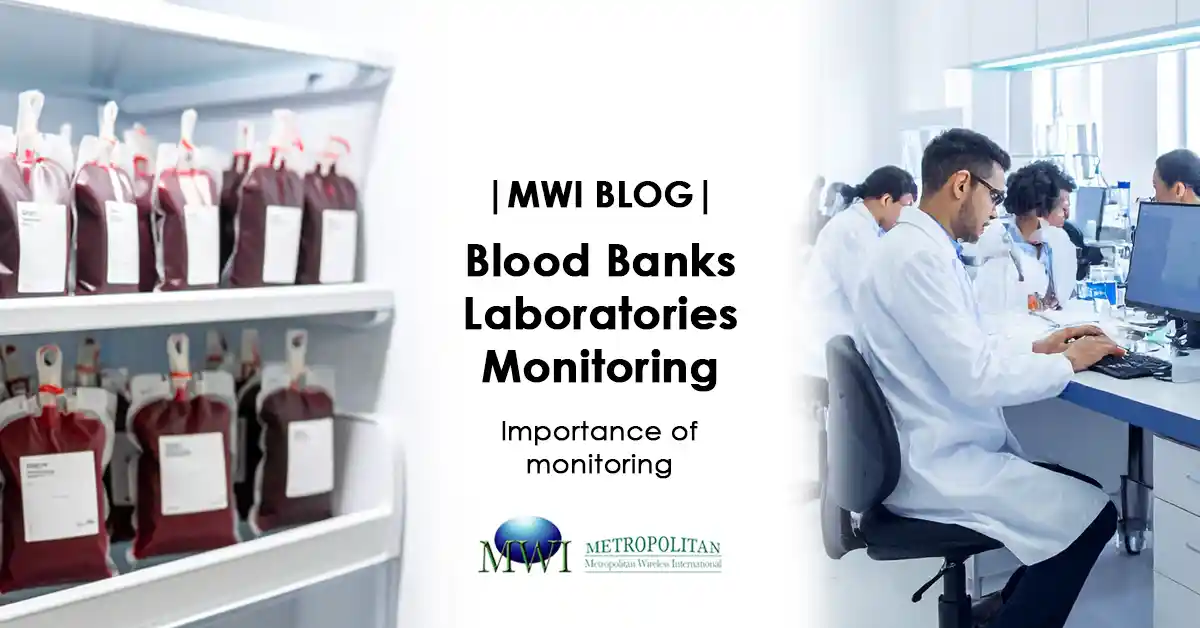In both blood banks and clinical laboratories, temperature control isn’t just a matter of operational efficiency — it’s a matter of life and death. Blood components, reagents, and biological samples are highly sensitive to even the slightest temperature deviations. That’s why continuous, accurate, and compliant temperature monitoring is a non-negotiable standard in these environments.
The High Stakes of Temperature Control
Blood banks and labs handle:
-
Whole blood and blood components (platelets, plasma, red cells)
-
Vaccines, serums, and diagnostic reagents
-
Biological specimens (e.g. tissue, serum, DNA/RNA)
-
Enzymes and chemicals with stability windows
Each of these has specific storage requirements:
-
Red blood cells: 2°C to 6°C
-
Plasma: -18°C or colder
-
Platelets: 20°C to 24°C with constant agitation
-
Reagents: typically 2°C to 8°C
Even a brief excursion outside these limits can:
-
Cause degradation or contamination
-
Render samples unusable
-
Compromise diagnoses
-
Violate compliance regulations

Risks of Poor Temperature Control
Without precise temperature monitoring, labs and blood banks face:
-
Spoiled inventory costing thousands in losses
-
Inaccurate test results due to degraded samples
-
Regulatory non-compliance and failed audits
-
Legal liability in case of patient harm
The hidden cost? Trust erosion. Medical institutions, research partners, and patients expect absolute reliability from these facilities.
Compliance Requirements You Must Meet
Several global and regional standards require strict temperature controls:
| Regulation/Standard | Key Temperature-Related Requirement |
|---|---|
| WHO Blood Cold Chain | Continuous monitoring & validation |
| FDA 21 CFR Part 606 | Storage conditions for blood & components |
| ISO 15189 | Lab temperature monitoring & documentation |
| CAP Accreditation | Environmental monitoring for labs |
| HSA (Singapore) | Cold storage compliance for blood & biologics |
These require not just monitoring, but logged evidence, alerts, and calibration.
Why Manual Monitoring Falls Short
Traditional practices like writing temperatures on paper logs or relying on once-daily checks have major flaws:
-
Miss excursions during off-hours or weekends
-
Subject to human error or falsification
-
Provide no real-time alerts
-
Hard to audit or analyze trends
Even digital thermometers without data logging can’t prove continuous compliance.
IoT-Based Temperature Monitoring: The Smart Solution
Smart monitoring systems powered by IoT offer unmatched visibility and control.
✅ Key Features:
-
24/7 Real-Time Monitoring
Wireless sensors track temperatures in refrigerators, freezers, and incubators. -
Instant Alerts
Get SMS, email, or app notifications when thresholds are breached. -
Digital Logs & Reports
Automatically stored, tamper-proof records that meet audit standards. -
Multi-Site Dashboard
Monitor all your storage units across facilities from one cloud-based interface. -
Battery Backup & Failover
Keeps logging during power outages or network downtime.
Real-World Lesson: The Cordlife Incident
In 2023, Cordlife Group, one of Singapore’s leading cord blood banks, made headlines when it was revealed that more than 2,000 cord blood and cord lining samples were potentially compromised due to sub-optimal temperature storage conditions.
According to reports from the Ministry of Health (MOH), multiple storage tanks were found operating outside the required temperature range for extended periods. Investigations cited inadequate temperature monitoring and alert systems, as well as delayed response to temperature deviations.
The fallout included:
-
Suspension of Cordlife’s operations
-
Loss of trust among customers and healthcare partners
-
Public outcry and widespread media coverage
-
Regulatory tightening for all licensed cord blood banks in Singapore
This incident underscores a painful truth:
⚠️ Manual monitoring or poorly configured systems are not enough in today’s high-stakes healthcare environment.
Simplify Compliance and Save Lives
With smart monitoring in place, blood banks and labs can:
-
Detect problems before they cause damage
-
Focus on patient care and research, not paperwork
-
Be fully audit-ready at all times
Whether you’re running a clinical lab, research facility, or national blood bank, temperature monitoring is not optional — it’s foundational.
MWI IOT Solution: Purpose-Built for Medical-Grade Monitoring
MWI offers a compliance-ready monitoring solution for labs and blood banks:
-
WHO, ISO, HSA-aligned configuration
-
Accurate to ±0.3°C with calibration certificates
-
Automatic alert routing and downtime tracking
-
Dashboard + mobile app for full visibility
-
PDF/CSV exports for regulatory reports
✅ Trusted by healthcare and laboratory facilities across Southeast Asia
Other Blogs
Food Storage
Medical Storage
IT Equipment
Server room temperature & humidity monitoring


